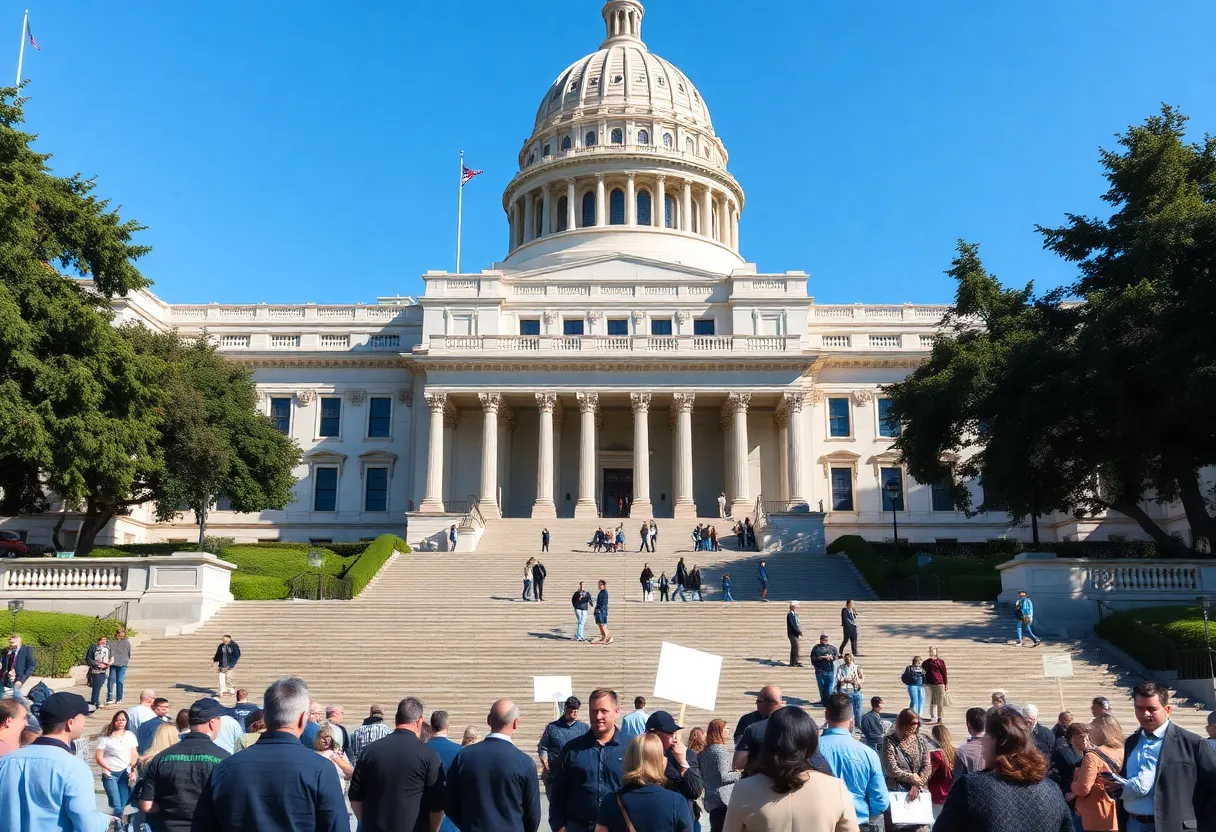California, September 10, 2025
News Summary
California business leaders are expressing their disappointment over the lack of comprehensive plans for the renewal of the state’s cap-and-trade climate program. With no substantial legislation being discussed, concerns regarding economic impacts and poor policy are rising. Recent auction results show disappointing revenues, prompting calls for thorough stakeholder engagement. The renewal is critical for achieving California’s climate objectives, including emission reductions and carbon neutrality by 2045, with increasing fear that rushed proposals could jeopardize both economic stability and environmental progress.
California business leaders have expressed profound disappointment regarding a lack of comprehensive plans for the renewal of the state’s cap-and-trade climate program at the State Capitol. Various organizations representing multiple economic sectors have united to urge lawmakers to reject any last-minute proposals that do not align with their expectations for a sustainable and economically viable legislative framework.
It has been almost five months since state leaders pledged to reauthorize California’s landmark climate law aimed at balancing economic stability with environmental aspirations. However, no substantial legislation has been meticulously deliberated through the policy committee processes in either legislative chamber, leading to frustrations among key stakeholders who were excluded from the process.
Recent results from state carbon allowance auctions revealed that the revenues generated fell short of expectations. This development has prompted criticisms regarding the lack of serious planning concerning the program’s future. Business leaders have warned that hastily formed regulations could lead to increased costs for California families and businesses alike.
Among the concerns raised, industry representatives highlighted that poor policy crafting could hamper California’s economic climate, and even diminish job opportunities. The state’s cap-and-trade program, established in 2006, is intended to limit carbon emissions by mandating that major polluters obtain allowances for their emissions. The renewal of this program is critical to ensure that California meets its ambitious climate objectives of reducing emissions to 40% below 1990 levels by 2030, along with achieving carbon neutrality by 2045.
If the program does not receive reauthorization, allowances may remain at lower prices, limiting potential future revenues, and adversely affecting California’s capability to achieve its greenhouse gas reduction targets. Governor Gavin Newsom’s office has made a commitment to extend the cap-and-trade program, advocating for a collaborative approach in its negotiation among stakeholders.
Despite these efforts, environmental groups have articulated concerns that any delay in the reauthorization process may endanger California’s connections with other domestic and international cap-and-trade systems. Critics across various sectors assert that the extension should not be rushed and insist that a more thorough engagement with stakeholders is essential.
Furthermore, some environmental advocates have been critical of the existing cap-and-trade initiative for failing to address pollution in low-income neighborhoods. Meanwhile, the California Air Resources Board is currently examining potential adjustments to improve the efficacy of the program, though it has faced criticism related to its stakeholder engagement procedures.
The stakes surrounding the future of the cap-and-trade program in California extend beyond environmental concerns; they encompass significant economic and political ramifications. As discussions continue, leaders across industries emphasize that the focus must remain on developing a robust plan that serves both ecological and economic needs, underlining that no proposal at all is preferable to a flawed one.
Key Takeaways from the Situation
- The lack of a comprehensive cap-and-trade plan is troubling for California business leaders.
- Recent state auction results show disappointing revenues.
- The program’s renewal is vital for meeting California’s climate goals.
- A rushed extension may lead to increased costs and potential job losses.
- Stakeholder engagement is necessary for an effective new plan.
Essential Information regarding Cap-and-Trade Program
| Feature | Description |
|---|---|
| Established | 2006 |
| Emission Reduction Goal | 40% below 1990 levels by 2030 |
| Carbon Neutrality Target | By 2045 |
| Revenue Generation | Funds various climate and environmental projects |
| Current Challenges | Low auction revenues, lack of comprehensive planning |
FAQ
What is the cap-and-trade program?
The cap-and-trade program is a regulatory system that aims to limit carbon emissions by requiring major polluters to purchase allowances for their emissions.
Why is the cap-and-trade program important for California?
This program is crucial for helping California achieve its climate goals, including reducing greenhouse gas emissions and promoting sustainability.
What are current concerns regarding the program?
Business leaders and stakeholders are worried that the absence of a comprehensive plan may lead to increased costs and economic instability.
What could happen if the program is not renewed?
Without renewal, allowance prices may remain low, restricting future revenues and hindering California’s capacity for essential emission reductions.
How can stakeholders contribute to a better plan?
Engaging in thorough discussions and providing input in the legislative process can help shape a more effective and balanced cap-and-trade program.
Deeper Dive: News & Info About This Topic

Author: STAFF HERE SAN DIEGO WRITER
The SAN DIEGO STAFF WRITER represents the experienced team at HERESanDiego.com, your go-to source for actionable local news and information in San Diego, San Diego County, and beyond. Specializing in "news you can use," we cover essential topics like product reviews for personal and business needs, local business directories, politics, real estate trends, neighborhood insights, and state news affecting the area—with deep expertise drawn from years of dedicated reporting and strong community input, including local press releases and business updates. We deliver top reporting on high-value events such as Comic-Con International, San Diego County Fair, and San Diego Pride Festival. Our coverage extends to key organizations like the San Diego Regional Chamber of Commerce and United Way of San Diego County, plus leading businesses in biotechnology, healthcare, and technology that power the local economy such as Qualcomm, Illumina, and Scripps Health. As part of the broader HERE network, including HEREAnaheim.com, HEREBeverlyHills.com, HERECostaMesa.com, HERECoronado.com, HEREHollywood.com, HEREHuntingtonBeach.com, HERELongBeach.com, HERELosAngeles.com, HEREMissionViejo.com, and HERESantaAna.com, we provide comprehensive, credible insights into California's dynamic landscape.





